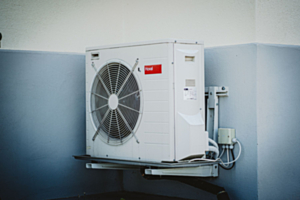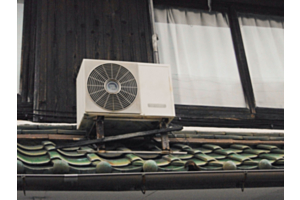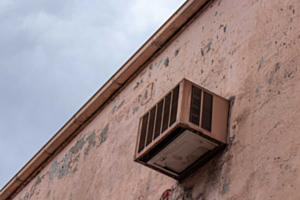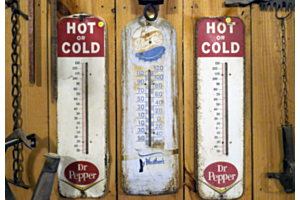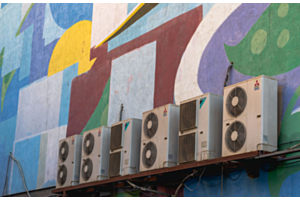Blog
-
September 05, 2023
Ductless mini splits are a rising technology. You’ve probably heard friends, family, neighbors, and colleagues remark on their mini split units. However, you’ve used traditional HVAC all your life, and you aren’t sure why you should consider switching now.
Are mini splits really more energy-efficient than traditional HVAC? And if so, why?
Yes, ductless mini splits are far better for our planet than furnaces and central air conditioning, and it comes down to a few very simple reasons.
The first is the absence of ducts.
Ducts are not the best means of delivering hot or cold air by a long shot. They have teeny-tiny gaps and openings that allow air to escape. Those gaps can become more pronounced the longer you have your ducts, often unbeknownst to you.
About 20 to 30 percent of the air that travels through your ducts from your furnace or air conditioner is lost. That air exits through the gaps in the ductwork, which can explain why it
-
August 29, 2023
Ductless mini splits are environmentally friendly, efficient cooling and heating solutions for an increasing number of homes. If you’re considering adding a mini split system to your property, you should carefully ponder the unit’s placement.
This guide will provide pointers for outdoor and indoor mini split unit positioning.
Positioning the Indoor Mini Split Unit
Some homeowners are more concerned with hiding the unit. However, air flow and distribution should be your main priorities when determining where your mini split unit should go.
If air blows straight up to the ceiling or down to the floor, that will require more time to heat or cool a zone. Your mini split must work harder in the interim, which could shorten its lifespan.
The following tips will help you select the ideal spot for your indoor mini split.
Limit Your Distance from the Floor
You cannot install the indoor unit too
-
August 22, 2023
Ductless mini split systems outshine traditional HVAC like air conditioners and furnaces. Mini splits are smaller and more streamlined, have fewer components, use less energy, require no ducts, and produce optimal results. Users report lower utility bills for the life of the mini split unit.
However, a mini split requires servicing to keep running its best. The question becomes, how often should you call a technician out to your home?
Ductless mini split systems need servicing at least once a year. Double that for units capable of heating and cooling.
How do you know when it’s time for mini split servicing? Your units will indicate that you should have your technician on speed dial. Here are some signs your mini split needs care.
You Can’t Shake That Earthy Smell
It seems like every time you run your mini split, a stinky, earthy
-
August 15, 2023
Ductless mini splits are all the rage, but precisely what is a mini split, and how does it work? This introductory guide to the basics will tell you everything you need to know.
A ductless mini split system is not your traditional heating or cooling system. Rather than requiring separate heating and cooling units, such as a furnace versus an air conditioner, a mini split provides cooling and heating as required.
It does this without using ducts, which are prone to air losses that make traditional HVAC less efficient.
So how does a mini split system work? The mini split includes a compressor and air-handling unit. The compressor sits on a slab in the side yard or backyard, while the air-handling units go inside in various rooms of your home. A thread of copper wire connects them and contains refrigerant.
The compressor is an evaporator when you use the
-
August 08, 2023
Air pollution is on the rise, remaining stubbornly that way since 2016, reports The New York Times. While everyone can do their part to control outdoor air quality, you have even more say over your indoor air quality.
Clean, healthy air can ward off diseases and illnesses like asthma, lung cancer, heart disease, and stroke. Bearing that in mind, what role do ductless mini splits play on your indoor air quality, especially compared to the traditional HVAC units that might be in your home?
Mini split systems use a filter to capture contaminants and impurities. In that regard, they’re no different than any air conditioner, but there’s more. Many mini splits have air purifiers to further improve indoor air quality.
Further, a mini split can control humidity in your home. You might wonder what humidity has to do with air quality, and it’s a lot! Humidity can make the air thicker
-
August 01, 2023
You’ve begun exploring the world of ductless mini splits ahead of switching from traditional HVAC like central air conditioning and furnace heating. However, you keep hearing the word “zone,” especially in relation to single-zone and multi-zone mini splits. What does it mean?
You’re in luck if you’re interested in learning more about this fascinating mini split subject, as we’ll provide plenty of information ahead. You’ll feel readier to buy a mini split system.
So, What Is a Zone, Anyway?
Zoned heating and cooling are the biggest differentiators between ductless mini splits and traditional HVAC, as it’s something the latter lacks.
Essentially, zoned heating and cooling are more concentrated than the air from your vents when running a central air conditioner or furnace. You must know what a zone is to understand why that’s the case.
A zone is a section of your home or commercial building that requires more heating and/or
-
July 25, 2023
Traditional HVAC units like heaters, furnaces, or air conditioners are the norm for many households, but that doesn’t make them the most energy-efficient option. In fact, they’re often anything but!
Ductless mini split systems are far greener and a better solution if you’re tired of the following 8 HVAC issues.
1. Spending an Arm and a Leg on Monthly Utility Bills
HVAC has had no choice but to become more environmentally friendly, but it still lags behind eco-conscious solutions like ductless mini splits. Continuing to use that outdated air conditioner or furnace will cause your utility bills to skyrocket each month.
You can save hundreds to thousands on your utility bill within the first year of switching to a ductless mini split system and tens of thousands within 10 to 15 years, possibly sooner!
-
July 18, 2023
You love the charm of your old home, and you don’t think you’d ever leave. However, an old furnace or air-conditioning unit is not nearly as charming as antique doors and fireplaces. You dread your electricity bill each month, as you know it’s going to be needlessly expensive.
There is a way to enjoy the uniqueness of your home without paying a fortune on your monthly bills. Get rid of the old HVAC in your home and pivot to a greener solution like a ductless mini split AC.
Let’s review the reasons why this is such a smart, cost-effective decision.
Goodbye Ducts!
Ducts are complicated. About 30 percent of the cold air your current air conditioner produces never reaches the vents in your home because it exits through small gaps in the ducts. This can leave you sweating as it seems like your AC isn’t running efficiently enough.
Upgrading your ducted air conditioner rarely works in an old home. It might not have the space
-
July 11, 2023
When determining if a ductless mini split is the right solution for your home, you must consider its cost. This guide will examine how much modern mini splits are priced and how much ROI they drive if you make this eco-friendly choice for your household or business.
How Much Will You Pay for a Ductless Mini Split System?
The cost of a ductless mini split varies depending on the factors we’ll look at momentarily.
According to Bob Villa, you’ll pay anywhere from $2,000 to $14,500 for a mini split system. The average price is $3,000.
This quote includes the cost of the mini split itself and installation prices.
The Factors That Influence the Cost of a Mini Split System
Why such a huge price discrepancy for a ductless mini split system? Let’s review the factors that drive the cost of a mini split.
· Zones: Single-zone mini
-
July 04, 2023
A ductless mini split system is an infinitely smarter choice than traditional HVAC. However, you should still research to find the best mini split for your home’s needs. How do you do that? Here are some features to look out for.
Good Warranty
If you saw our post on the cost of a ductless mini split system, you’ll recall these aren’t the cheapest heating and cooling units you can buy. A warranty makes your investment worthwhile, as it protects against workmanship defects.
A warranty of seven to 10 years is average and suffices, but anything over that is great if you can get it.
Simple Maintenance
A ductless mini split technician will take care of most of the heavy lifting regarding regular maintenance duties, but you’ll still have to do some of it yourself.
For example, you should keep the exterior of the compressor clean and replace air filters from time to time.
The more accessible your mini split


